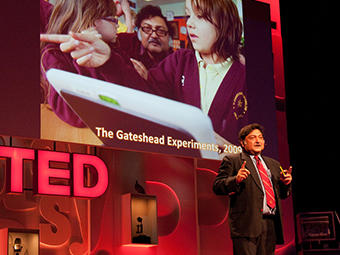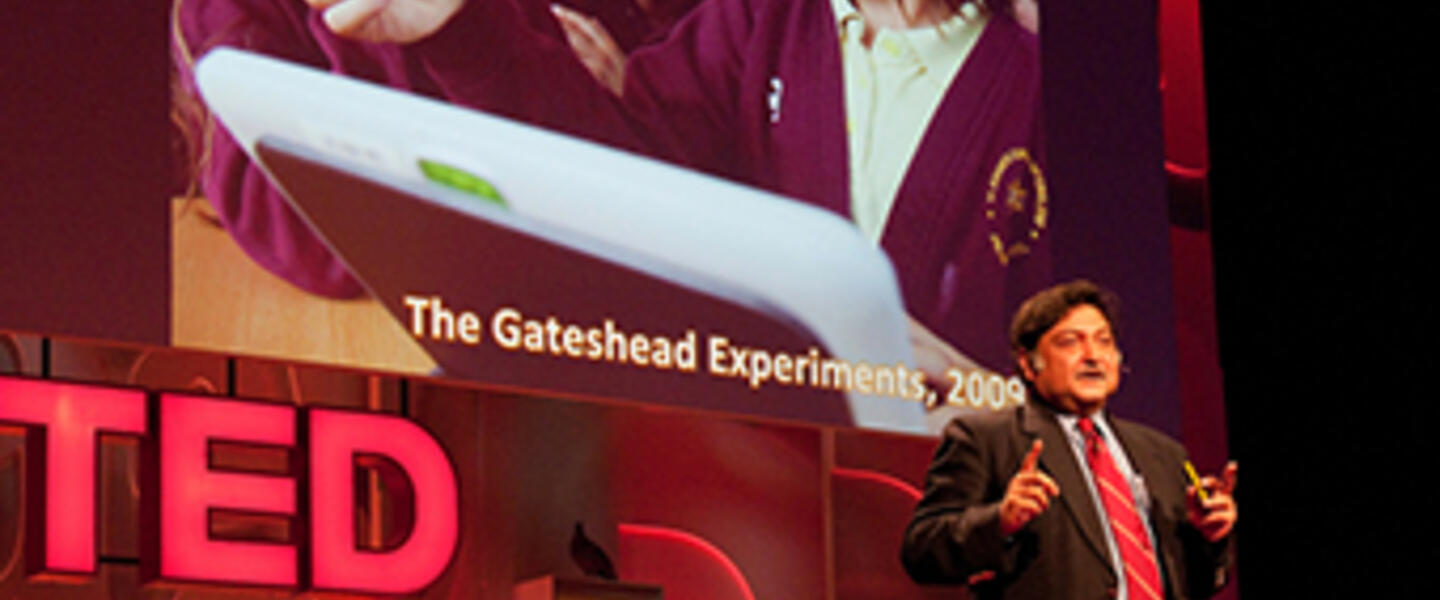
Section Branding
Header Content
Sugata Mitra on the Future of Learning
Primary Content

What is the future of learning? I remember pondering this question often as I plodded through my Master’s degree program in Curriculum and Instruction. I had no choice of course as the question was part of the very fabric of the program. But as a career changer (I have a background in broadcast media and communications), I found the answers a bit jarring. I still had a student perspective. I thought the teacher as the “Sage on the Stage” and the book as the ultimate authority was how the world should be.
How quickly I learned how much that model had changed more than a half a century ago really and has continued to evolve ever since. Gone is the notion that the teacher is the fount of all knowledge. Now students are more involved in setting the course and pace of their learning. Some examples of this are project based learning programs and inquiry based learning programs.
One theme permeates the above mentioned teaching and learning models: they emphasize reaching beyond the classroom and giving students more control to develop their innate curiosity, creativity and find the answers themselves.
That’s the message that Professor Sugata Mitra, winner of the TED Prize 2013 presented in his winning talk. Mitra is known for his “Hole in the Wall” experiments where he placed a computer with Internet access in a slum in India. Left to their own devices, the children of the community taught themselves on the computer then taught each other.
Mitra’s premise is that schools are still operating on a 19th century factory model designed to spit out workers with the same skills. He encourages teachers and parents to break free of that model and do a better job at sparking children’s curiosity and agency.
Mitra has launched a SOLE toolkit to help parents and teachers do that.
He is also using his TED Prize winnings to build The School in the Cloud, “a learning lab in India where children can embark on intellectual adventures by engaging and connecting with information and mentoring online. A global network of educators and retired teachers will support and engage the children through the web.”
Watch him explain his vision in the video below. Tell us what you think.
I am not entirely convinced that giving students complete control is the best method. I witnessed its strengths and shortcomings when I observed an inquiry based learning charter elementary school during my studies. Children possess different learning styles. What works for one may not work for others. As we continue to shape what the future of teaching and learning should be, I hope we always take that into account.






